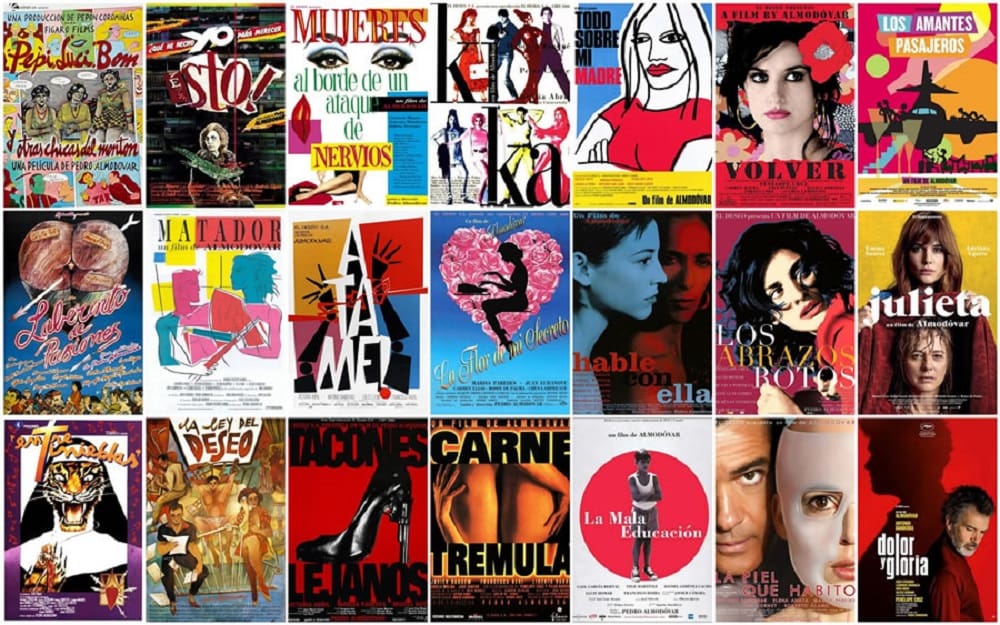Written by Miguel Antonio Ortega
As an actor, I’ve had the honor of performing on many of Spain’s illustrious stages, and as a critic, I’ve been fortunate enough to experience the enchantment of countless performances. This dual perspective gives me a unique insight into the world of Spanish theatre. Each theatre in Spain, from the architectural wonders to those steeped in cultural significance, has its own tale to tell. And I’m here, ready to take you on a journey through these stories, sharing the magic and allure of Spain’s finest theatres.
The Cultural Tapestry of Spanish Theatre
Theatre in Spain is not merely a form of entertainment; it is a rich cultural tapestry woven with threads of history, tradition, and creativity. It is a living, breathing entity that encapsulates the spirit of the nation, reflecting its past, present, and future in a myriad of ways.
The Spanish theatre culture is a vibrant blend of classical and contemporary, a dynamic fusion that creates a unique theatrical landscape. The echoes of the past reverberate in the grandeur of the classical theatres, the timeless works of playwrights like Lope de Vega and Calderón de la Barca, and the traditional forms like the ‘Comedia’ and ‘Zarzuela.’ These historical elements form the bedrock of Spanish theatre, providing a rich foundation upon which contemporary creativity thrives.
On the other hand, the voices of the future are heard in the innovative works of modern playwrights, the avant-garde productions, and the experimental theatre groups that push the boundaries of theatrical expression. These contemporary elements infuse Spanish theatre with a sense of freshness and vitality, ensuring its relevance in the modern world.
The interplay between the classical and contemporary is what makes Spanish theatre so captivating. It’s a dialogue between the old and the new, tradition and innovation, history and future. This dialogue is not just seen on the stage but also felt in the audience, creating a theatre experience that is both engaging and enlightening.
Whether you’re in Spain to learn Spanish or simply looking to learn Spanish Online, immersing yourself in the theatre scene is an enriching experience. It’s not just about understanding the language; it’s about experiencing the culture. It’s about seeing how words come to life on stage, how stories are told through performances, and how theatre reflects the soul of Spain.
So, as you embark on your journey to Spain, I encourage you to explore the world of Spanish theatre. Attend a play at a local theatre, visit the historical theatres, engage with the local theatre community. As you immerse yourself in the theatre scene, you’ll find that you’re not just learning a language; you’re experiencing a culture. And in the process, you’ll gain a deeper appreciation of the rich tapestry that is Spanish theatre.
The Spanish Theatre: A Historical Perspective
The Spanish theatre tradition is a rich and diverse tapestry that dates back to the Middle Ages. Its roots can be traced to the Roman theatre, which introduced the art of drama to the Iberian Peninsula. The Romans left behind a legacy of theatre architecture and dramatic literature, elements of which can still be seen in Spanish theatre today.
However, Spanish theatre is not just a continuation of Roman theatre. It has been shaped and enriched by various cultural influences over the centuries. One of the most significant influences is the Moorish culture. During the Moorish rule from the 8th to the 15th century, Spain became a melting pot of Christian Jewish, and Islamic cultures. This cultural fusion had a profound impact on all aspects of Spanish life, including theatre. The Moorish influence can be seen in the use of music, dance, and elaborate costumes in Spanish theatre, adding a unique flavor to it.
Over the centuries, Spanish theatre has evolved, reflecting the changing times and tastes. The Golden Age of Spanish theatre in the 16th and 17th centuries saw the emergence of great playwrights like Lope de Vega and Calderón de la Barca, whose works are still performed today. The 20th century brought a wave of avant-garde movements, pushing the boundaries of theatrical expression.
Today, Spanish theatre stands as a testament to Spain’s rich cultural heritage and artistic prowess. It is a vibrant blend of the old and the new, the traditional and the contemporary. It continues to evolve, embracing new ideas and technologies, while staying true to its historical roots.
Whether it’s a classical play in a historic theatre or a contemporary performance in a modern venue, Spanish theatre offers a rich and diverse experience. It’s not just about entertainment; it’s about understanding Spain’s past, appreciating its present, and looking forward to its future.
If you want to learn more about Spanish Theatre:
The Unique Voice of Spanish Theatre: A Tribute to Pedro Almodóvar
As I pen down this guide, I feel it would be incomplete without paying homage to a figure who has significantly influenced Spanish cinema and theatre – Pedro Almodóvar. Almodóvar, a celebrated director, writer, and producer, has left an indelible mark on the landscape of Spanish performing arts. His unique voice and vision have not only shaped but also revolutionized the modern Spanish theatre scene.
Almodóvar’s works are a testament to his genius and creativity. They are characterized by their bold storytelling, vivid characters, and a distinctive style that blends drama, comedy, and melodrama with an unerring flair. His narratives often explore themes of desire, passion, and identity, presenting a tapestry of human emotions that resonate with audiences worldwide.
His characters, often strong, complex women or men grappling with their identities, are brought to life with such depth and nuance that they leap off the screen or stage and into the hearts of the audience. They are real, relatable, and profoundly human, reflecting Almodóvar’s keen understanding of the human condition.


Almodóvar’s influence extends beyond his own works. He has nurtured and championed numerous actors and writers, contributing to the vibrant and diverse Spanish theatre scene we see today. His production company, El Deseo, has produced many critically acclaimed films and plays, further cementing his legacy in Spanish theatre.
Moreover, Almodóvar’s works have transcended cultural and linguistic barriers, earning him a global following. His films have won numerous awards, including two Oscars, and his plays have been performed in theatres around the world. His success on the international stage has brought Spanish theatre into the global spotlight, inspiring a new generation of actors, writers, and directors.
Experiencing Theatre in Spain: A Cultural Journey
Going to the theatre in Spain is more than just an evening’s entertainment; it’s a cultural journey that offers a unique insight into the Spanish way of life. The theatre is deeply ingrained in Spain’s cultural fabric, and attending a performance is a shared experience that brings people together, transcending age, background, and social status.
The Theatre Culture
In Spain, theatre is not just for the elite or the artistically inclined; it’s for everyone. It’s not uncommon to see families with children, groups of friends, or couples on a date at the theatre. The atmosphere is lively and social, with people often gathering in the theatre café or bar before the show for a drink and a chat.
The Post-Show Experience
After the show, the experience continues. It’s customary in Spain to discuss the performance over drinks or dinner, dissecting the plot, debating the characters, and sharing impressions. This post-show ritual is a testament to the Spanish love for conversation and their passion for theatre.
In conclusion, going to the theatre in Spain is a rich and rewarding experience. It’s a chance to immerse yourself in the culture, engage with the arts, and connect with the people. Whether you’re a theatre enthusiast or a casual viewer, the Spanish theatre experience is one you won’t want to miss.
The Best Theatres in Spain: An Actor’s and Critic’s Top Picks
Teatro Real, Madrid
The Teatro Real in Madrid, one of Europe’s most prestigious opera houses, is not just known for its architectural grandeur but also for the quality of performances it hosts. As an actor, the Teatro Real is a dream stage, and as a critic, it’s a treasure trove of world-class performances. Over the years, it has seen a multitude of performances, from classic operas to contemporary works, graced by some of the world’s most renowned artists.
One of the most popular operas performed at the Teatro Real is Verdi’s “Rigoletto,” which has been staged 387 times, followed closely by “Aida” with 361 performances and “Il trovatore” with 342 performances. These classic operas, with their timeless appeal and emotional depth, have captivated audiences for generations.
In recent years, the Teatro Real has continued to host a variety of performances. The 2021-22 season opened with Puccini’s “La Bohème,” featuring Ailyn Perez in the lead role of Mimì and Francesco Demuro as Rodolfo. This beloved opera, with its poignant story and beautiful music, was a highlight of the season.
Another notable performance was Puccini’s “Turandot,” featuring three different casts over its run. The role of Princess Turandot was alternately performed by Anna Pirozzi, Elena Pankratova, and Saioa Hernández, showcasing the depth of talent in the world of opera.
The Teatro Real also hosted a performance of Luigi Cherubini’s acclaimed opera “Medea,” marking the opening of a new season. This powerful opera, with its dramatic story and intense emotions, was a memorable addition to the theatre’s repertoire.
In addition to operas, the Teatro Real also hosts concerts by renowned artists. One such concert featured Diana Damrau, a dynamic and expressive singer known for her gift in interpreting a wide range of musical styles.
These performances and artists represent just a fraction of the rich tapestry of theatre that the Teatro Real offers. Each performance is a testament to the theatre’s commitment to artistic excellence and its role as a beacon of culture in Spain.
For more detailed information about the performances and artists at the Teatro Real, you can visit these websites:
- Teatro Real – Wikipedia
- Teatro Real 2021-22 Review: La Bohème (Alternative Cast Performances)
- Turandot | Official tourism website
- Medea | Official tourism website
- Diana Damrau – Teatro Real
Gran Teatre del Liceu, Barcelona
The Gran Teatre del Liceu in Barcelona, often simply referred to as the Liceu, is a beacon of culture and art. This theatre, with its rich history and grand architecture, has hosted countless performances, making it a significant cultural landmark in Barcelona and Spain at large.
Over the years, the Liceu has seen a multitude of performances, from classic operas to contemporary works, graced by some of the world’s most renowned artists. Among the most frequently performed operas at the Liceu are Verdi’s “La Traviata”, Bizet’s “Carmen”, Mozart’s “Don Giovanni”, and Puccini’s “Tosca”. These timeless masterpieces, with their compelling narratives and beautiful music, have left indelible impressions on audiences for generations.
The Liceu has also been the stage for many famous singers. Elvira de Hidalgo, Kirsten Flagstad, Boris Christoff, Joan Sutherland, Mirella Freni, and Jose Carreras are just a few of the illustrious names that have graced the Liceu with their performances. Their talent and artistry have contributed to the theatre’s reputation as one of the leading opera houses in the world.
In recent years, the Liceu has continued to host a variety of performances. The 2023 season includes performances of Giacomo Puccini’s “Turandot” and John Adams’ “Antony & Cleopatra”. These performances, along with others, showcase the theatre’s commitment to providing diverse and high-quality productions.
The Gran Teatre del Liceu is more than just a theatre; it’s a cultural institution that has played a pivotal role in Barcelona’s cultural scene for over a century. Each performance is a testament to the theatre’s commitment to artistic excellence and its role as a beacon of culture in Spain.
For more detailed information about the performances and artists at the Gran Teatre del Liceu, you can visit these websites:
- Gran Teatre del Liceu in Barcelona – Peak, Premier Performance
- Gran Teatre del Liceu in Barcelona
- Gran Teatre del Liceu, Barcelona, Spain | HiSoUR – Hi So You Are
- Gran Teatre del Liceu in Barcelona – Barcelona Siempre
- Gran Teatre del Liceu – Gran Teatre del Liceu
Teatro Cervantes, Malaga
If you’re in Malaga to learn or study Spanish, the Teatro Cervantes is a must-visit.
The Teatro Cervantes in Malaga, named after the famous Spanish writer Miguel de Cervantes, is a cultural landmark that has hosted a multitude of performances over the years. Its stage has been graced by some of the most renowned artists in the world, contributing to its reputation as a leading theatre in Spain.
One of the most notable performances at the Teatro Cervantes was Verdi’s “Otello”. The cast included Jorge de León in the title role, Carlos Álvarez as Jago, and Rocío Ignacio as Desdemona, with Marco Guidarini conducting. This performance of “Otello” showcased the theatre’s commitment to delivering high-quality productions featuring world-class talent.
The theatre has also hosted performances by some of the world’s most famous artists, including Art Garfunkel, Suzanne Vega, and Van Morrison. These performances span a wide range of genres, reflecting the theatre’s diverse programming.
Another notable performance at the Teatro Cervantes was by Les Luthiers, a group of Argentinian musicians-actors-humorists. Known for their unique blend of music, humor, and theatre, Les Luthiers’ performance added a distinct flavor to the theatre’s repertoire.


These performances and artists represent just a fraction of the rich tapestry of theatre that the Teatro Cervantes offers. Each performance is a testament to the theatre’s commitment to artistic excellence and its role as a beacon of culture in Malaga.
For more detailed information about the performances and artists at the Teatro Cervantes, you can visit these websites:
- Teatro Cervantes de Málaga Adds One Performance Of ‘Otello’
- Cervantes Theatre – Andalucia.com
- Teatro Cervantes / History
- les luthiers – TEATRO CERVANTES | ECHEGARAY DE MÁLAGA
Exploring Malaga’s Theatre Scene: Top Venues and Performances
Here are three other top theatres in Malaga that you should consider visiting:
- Teatro del Soho: This theatre is a recent addition to Malaga’s cultural scene, founded by the renowned actor Antonio Banderas. It aims to bring high-quality, innovative productions to the city, making it a must-visit for theatre enthusiasts.
- Teatro Echegaray: Located in the heart of Malaga, Teatro Echegaray is a historic theatre that hosts a wide range of performances, including plays, concerts, and dance shows. Its beautiful architecture and diverse programming make it a popular choice among locals and tourists alike.
- Teatro Cánovas: This theatre is known for its commitment to promoting contemporary performing arts. It hosts a variety of performances, including theatre, dance, music, and puppetry, with a special focus on productions for children and young audiences.
Teatro Romano: A Journey Through History
The Teatro Romano, or the Roman Theatre, is a significant historical site in Malaga, offering a glimpse into the city’s ancient past. Built in the 1st century AD during the reign of Emperor Augustus, the theatre was a central part of the city’s cultural life for nearly three centuries.
The theatre’s architecture is a testament to the engineering prowess of the Romans. Rising approximately 16 metres high and spanning 31 metres in diameter, the theatre could accommodate a large audience. The semi-circular orchestra, the seating area (cavea), and the stage (proscaenium) are typical features of Roman theatres, designed to provide optimal acoustics and visibility.
However, by the 3rd century AD, the theatre fell into disuse. In the subsequent centuries, it served various purposes, including a cemetery in the 5th and 6th centuries. Later, its materials were used for building other structures, a common practice in the ancient world.
The Teatro Romano remained buried and forgotten until 1951 when it was discovered during construction work. Since then, it has undergone extensive restoration and is now open to the public. Today, it serves as an open-air theatre, hosting a variety of performances and events.
Visiting the Teatro Romano is like stepping back in time.
Where to Find Information on Theatre Performances in Malaga
When planning your theatre experience in Malaga, it’s essential to know where to find reliable and up-to-date information on upcoming performances. Here are some websites that can help you stay informed about the theatre scene in Malaga:
Teatro Cervantes Official Website
The official website of Teatro Cervantes is a great place to start. It provides information about upcoming performances, including dates, times, and ticket prices. You can also learn about the history of the theatre and its significance in Malaga’s cultural scene.
Teatro Echegaray Official Website
The Teatro Echegaray’s official website is another excellent resource. Like the Teatro Cervantes, it provides detailed information about upcoming shows and events.
Malaga Tourism Website
The official tourism website of Malaga is a comprehensive resource for all things related to travel and culture in Malaga, including theatre. It provides a calendar of events, including theatre performances, concerts, and festivals.
Eventbrite
Eventbrite is a global platform for finding and booking events, including theatre performances. You can search for events in Malaga and filter by date, category, and price.
Ticketmaster
Ticketmaster is another global platform for event tickets. It covers a wide range of events, including theatre, concerts, sports, and more. You can search for theatre performances in Malaga and book tickets directly through the website.
Remember, when booking tickets, always use trusted platforms and official theatre websites to ensure your purchase is secure and valid.
Tips for Buying Tickets and Choosing Plays
Buying tickets for a play in Spain is a straightforward process. Most theatres have online booking systems, and tickets can also be purchased at the box office. It’s advisable to book in advance, especially for popular shows.
When choosing a play, consider your interests and language proficiency if you’re not a native Spanish speaker. Many theatres offer performances with English (ingles) subtitles. Also, look out for plays by famous Spanish playwrights like Federico García Lorca and Pedro Calderón de la Barca.
The Spanish Theatre Experience
The theatre scene in Spain is a rich tapestry of history, culture, and creativity. Whether you’re an actor, a critic, or a theatre enthusiast, the Spanish theatres offer a unique experience. From the grand opera houses of Madrid and Barcelona to the vibrant cultural hub of Malaga, each theatre is a world in itself, waiting to be explored. So, whether you’re here to learn Spanish in Malaga , make sure to immerse yourself in the theatre culture. It’s an experience that will enrich your understanding of Spain and its vibrant culture.




